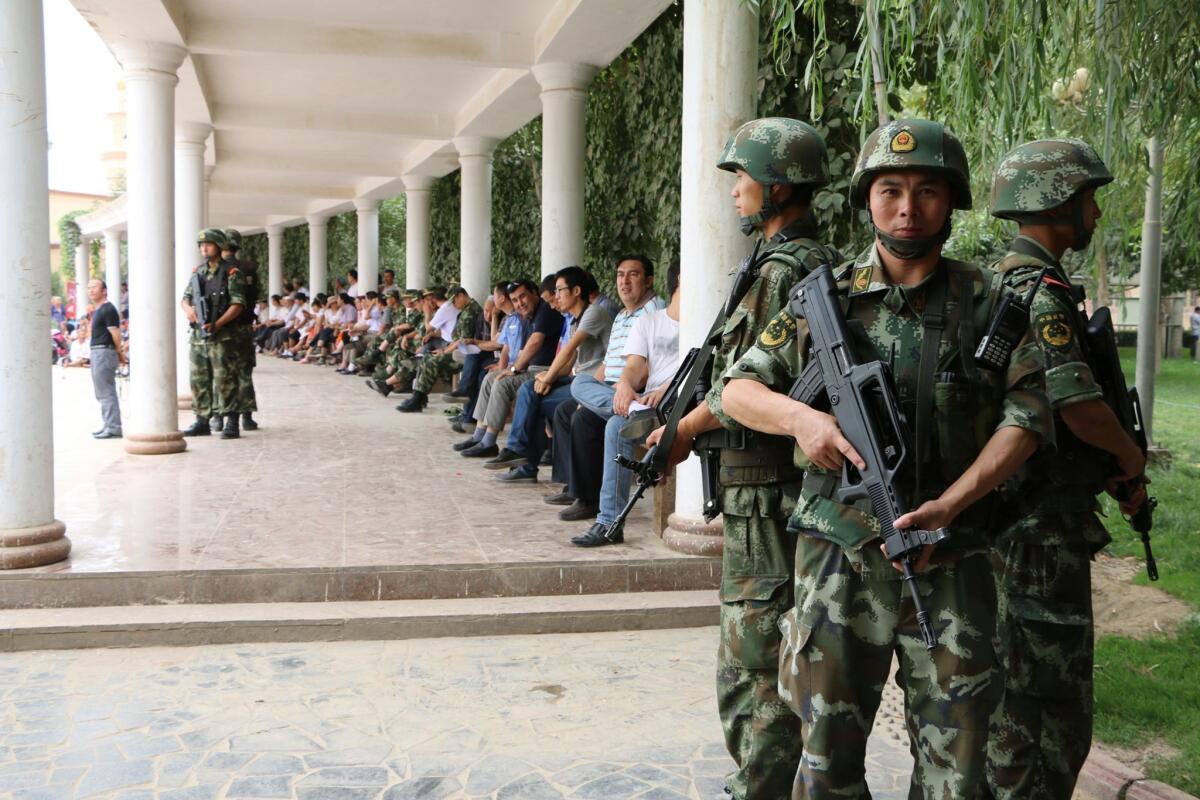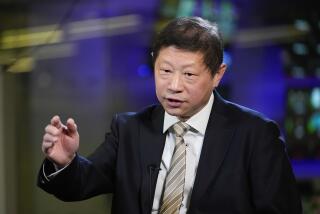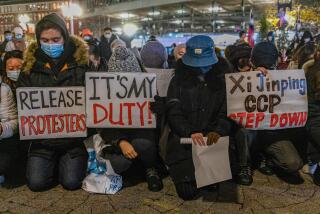Deadly clash in China: An ambush by Uighurs or a government massacre?

- Share via
Reporting From Beijing — What happened in the dead of night on a desolate road near a desert oasis in northwestern China is so shrouded in mystery that it would seem that nearly everybody who witnessed it took an oath of silence — or is dead.
But the most reliable accounts suggest that heavy-handed religious restrictions on the eve of one of Islam’s largest holidays provoked an uprising by Uighurs against police and civilians.
According to official accounts, 96 people died in the July 28 clash in Shache, also known as Yarkand, making it the deadliest incident of ethnic violence in China in five years. Uighurs, members of a Turkic Muslim minority concentrated in the Xinjiang region, say the death toll was much greater. Some are describing it as a massacre.
Nury Turkel, a Washington-based attorney who is active with the World Uyghur Conference, said it appeared the government was trying to hide something. “Something terrible has happened that they are trying to sweep under the rug,” Turkel said.
Like many such incidents, this one appears to have started small and spun out of control because of overreactions and miscalculations.
A resident of the town said the trouble began July 27 when Muslims were preparing for the Eid al-Fitr holiday, which ends the holy month of Ramadan. About 40 women were detained for wearing clothing deemed excessively Islamic, which is banned in Xinjiang.
“The women’s husbands and sons went to talk to the relevant people, saying that the women had to go home to prepare for the holiday. They did not agree,” said the resident, who, like other Uighurs in China, spoke on condition of anonymity.
Ghayyar Kuerban, a Uighur from Shache who lives in Germany but is in touch with the town’s residents, heard a similar story.
“There was a religious gathering, which the security thought was illegal. A large number of security forces came. There was a confrontation and things escalated,” Kuerban said. He said he was told that 15 to 20 people were shot at the gathering and that riots spread afterward to nearby villages.
“It is still very ambiguous,” Kuerban said. “There has been absolutely no independent reporting on what happened.”
Authorities allege that there was an “organized and premeditated” attack in which assailants armed with knives and axes ambushed cars and trucks on Route 215, the main road south into the town.
They identified the mastermind as Nuramat Sawut, a former imam who had links to the East Turkestan Islamic Movement, a separatist group operating across the border in Pakistan.
The Xinjiang Daily, a state-run newspaper, reported Thursday that Sawut had been fired from his job as an imam in a village mosque because of his disrespect for the elderly and poor knowledge of Islam.
“He is the shame of our village,” the newspaper quoted a cousin of Sawut’s as saying. “After the terrorist attack, everybody has drawn a clear line. We all support the Communist Party and the government in their efforts to strike a hard line against terrorism and return a peaceful life to us.”
A government-run website, Tianshan, ran a melodramatic feature about two Uighur motorists who were killed in the road ambush by “mobsters waving big knives and axes whose eyes were red.”
“You need to join our holy war. Otherwise we will kill you,” a member of the mob told the motorists, according to the report.
“This is a crime. This is destroying the reputation of Islam. You are not real Muslims,” one of the motorists responded shortly before he was killed. The story did not identify the source of the dialogue.
According to officials, 37 civilians were killed in the incident and 59 assailants were shot dead by police. An additional 215 people were arrested.
Overseas Uighurs discount the Chinese version of events. They say authorities locked down the town for days, blocking telephone calls and the Internet to prevent news from leaking out. The only reporting on what happened has come from the state news media.
Rebiya Kadeer, head of the World Uyghur Conference, said in an interview with Radio Free Asia that her group had information that 2,000 to 3,000 people were killed.
“We have evidence in hand that at least 2,000 Uighurs in the neighborhood of Ailixihu township have been killed by Chinese security forces on the first day and they ‘cleaned up’ the dead bodies on the second and third day during a curfew that was imposed,” Kadeer told the news service.
Other Uighur activists say that estimate is probably too high, but they believe far more people were killed than the 96 reported by the government.
“The Chinese government needs to allow independent reporting here if they want to be a respected member of the international community,” Turkel said.
More to Read
Sign up for Essential California
The most important California stories and recommendations in your inbox every morning.
You may occasionally receive promotional content from the Los Angeles Times.












